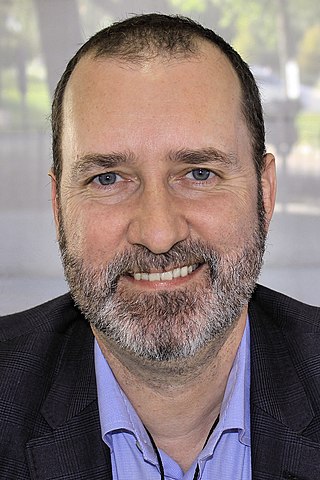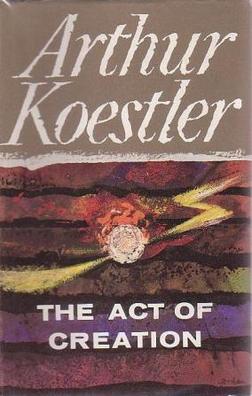
Intellectual property (IP) is a category of property that includes intangible creations of the human intellect. There are many types of intellectual property, and some countries recognize more than others. The best-known types are patents, copyrights, trademarks, and trade secrets. The modern concept of intellectual property developed in England in the 17th and 18th centuries. The term "intellectual property" began to be used in the 19th century, though it was not until the late 20th century that intellectual property became commonplace in most of the world's legal systems.

An invention is a unique or novel device, method, composition, idea or process. An invention may be an improvement upon a machine, product, or process for increasing efficiency or lowering cost. It may also be an entirely new concept. If an idea is unique enough either as a stand-alone invention or as a significant improvement over the work of others, it can be patented. A patent, if granted, gives the inventor a proprietary interest in the patent over a specific period of time, which can be licensed for financial gain.

Creativity is a characteristic of someone that forms something novel and valuable. The created item may be intangible or a physical object. Creativity enables people to solve problems in new or innovative ways.

Lisa Coles Guerrero is an American journalist, actress, former sportscaster, artist, and model. Since 2006, Guerrero has been an investigative correspondent for the nationally syndicated newsmagazine Inside Edition.
TRIZ combines an organized, systematic method of problem-solving with analysis and forecasting techniques derived from the study of patterns of invention in global patent literature. The development and improvement of products and technologies in accordance with TRIZ are guided by the laws of technical systems evolution. Its development, by Soviet inventor and science-fiction author Genrich Altshuller and his colleagues, began in 1946. In English, TRIZ is typically rendered as the theory of inventive problem solving.
Creativity techniques are methods that encourage creative actions, whether in the arts or sciences. They focus on a variety of aspects of creativity, including techniques for idea generation and divergent thinking, methods of re-framing problems, changes in the affective environment and so on. They can be used as part of problem solving, artistic expression, or therapy.

The Science of Discworld III: Darwin's Watch (2005) is a book set on the Discworld, by Terry Pratchett, Ian Stewart and Jack Cohen. It is the sequel to The Science of Discworld and The Science of Discworld II: The Globe.
Originality is the aspect of created or invented works that distinguish them from reproductions, clones, forgeries, or substantially derivative works. The modern idea of originality is according to some scholars tied to Romanticism, by a notion that is often called romantic originality. The validity of "originality" as an operational concept has been questioned. For example, there is no clear boundary between "derivative" and "inspired by" or "in the tradition of."

Physics World is the membership magazine of the Institute of Physics, one of the largest physical societies in the world. It is an international monthly magazine covering all areas of physics, pure and applied, and is aimed at physicists in research, industry, physics outreach, and education worldwide.

Wall to Wall Media, part of Warner Bros. Television Studios UK, is a television production company that produces event specials and drama, factual entertainment, science and history programmes for broadcast by networks in both the United Kingdom and United States. Its productions include Who Do You Think You Are?, New Tricks, Child Genius, and Long Lost Family.

Kevin Ashton is a British technology pioneer who cofounded the Auto-ID Center at the Massachusetts Institute of Technology (MIT), which created a global standard system for RFID and other sensors. He is known for coining the term "the Internet of Things" to describe a system where the Internet is connected to the physical world via ubiquitous sensors.

Marcus Peter Francis du Sautoy is a British mathematician, Simonyi Professor for the Public Understanding of Science at the University of Oxford, Fellow of New College, Oxford and author of popular mathematics and popular science books. He was previously a fellow of All Souls College, Oxford, Wadham College, Oxford and served as president of the Mathematical Association, an Engineering and Physical Sciences Research Council (EPSRC) senior media fellow, and a Royal Society University Research Fellow.

Amir Dan Aczel was an Israeli-born American lecturer in mathematics and the history of mathematics and science, and an author of popular books on mathematics and science.

David Eagleman is an American neuroscientist, author, and science communicator. He teaches neuroscience at Stanford University and is CEO and co-founder of Neosensory, a company that develops devices for sensory substitution. He also directs the non-profit Center for Science and Law, which seeks to align the legal system with modern neuroscience and is Chief Science Officer and co-founder of BrainCheck, a digital cognitive health platform used in medical practices and health systems. He is known for his work on brain plasticity, time perception, synesthesia, and neurolaw.
Brian Clegg is an English science writer. He is the author of popular science books on topics including light, infinity, quantum entanglement and surviving the impact of climate change, and biographies of Roger Bacon and Eadweard Muybridge.
The concept of multiple discovery is the hypothesis that most scientific discoveries and inventions are made independently and more or less simultaneously by multiple scientists and inventors. The concept of multiple discovery opposes a traditional view—the "heroic theory" of invention and discovery. Multiple discovery is analogous to convergent evolution in biological evolution.

The Act of Creation is a 1964 book by Arthur Koestler. It is a study of the processes of discovery, invention, imagination and creativity in humour, science, and the arts. It lays out Koestler's attempt to develop an elaborate general theory of human creativity.
Logology is the study of all things related to science and its practitioners—philosophical, biological, psychological, societal, historical, political, institutional, financial. The term "logology" is back-formed from the suffix "-logy", as in "geology", "anthropology", etc., in the sense of the "study of science". The word "logology" provides grammatical variants not available with the earlier terms "science of science" and "sociology of science", such as "logologist", "logologize", "logological", and "logologically". The emerging field of metascience is a subfield of logology.

Little Bets: How Breakthrough Ideas Emerge from Small Discoveries is a book written by Peter Sims, published by Free Press in January 2011.













